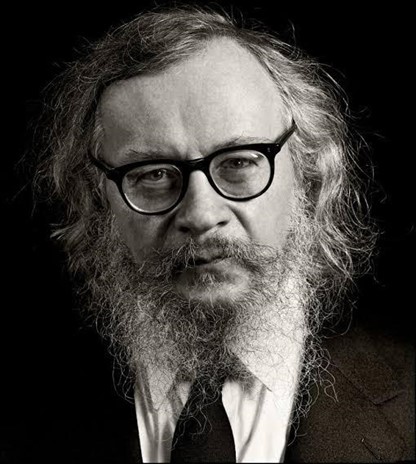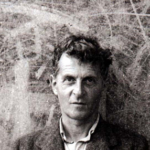Juliana Coelho de Souza Ladeira, Editor for scientific popularisation of the Revista Brasileira de Estudos da Presença and post-doctoral fellow in Social Anthropology at University of São Paulo, São Paulo, São Paulo, Brazil.
The inaugural thematic issue of the Revista Brasileira de Estudos da Presença, published in 2013, was dedicated to Jerzy Grotowski (1933-1999), a Polish director and teacher of the performer. The issue is notable for the richness and quality of its texts, the number of articles presented, and the variety of backgrounds of the participating researchers. The decision to highlight this volume is based on the historical significance of these works for theater research in Brazil, particularly with regard to expanded investigations into the possibilities of the performer1 (whether designated as “actor” or “performer”) and their working instruments within the theater field and beyond it.
Although the literature on Jerzy Grotowski and his collaborators Thomas Richards and Mario Biagini encompasses the various phases of their creative work, with particular emphasis on the radicality and inventiveness of their approaches, this issue focuses on the Art as Vehicle phase. The Workcenter‘s work is covered in at least eight articles and other studies, including those that are less directly related to it.
The issue includes unpublished publications by the main artists of the Workcenter experience, such as Richards (2023) and Biagini (2013a and 2013b), as well as those of Brazilian researchers who are more experienced and familiar with the trajectory and evolution of Grotowski’s legacy.
This is the case of Fernando Mencarelli (2013), who revisits the phases of Paratheatre (1969-1978) and Theatre of Sources (1976-1982) by considering the questions raised by the transculturality of the practices experienced and the cultural diversity of the participants: “the body maps that we mobilise from our culture when we experience body practices created in other contexts” (ibid., p. 133).
In another article, Cassiano Sydow Quilici (2013) discusses the transitions through the “steps of the ladder” of verticality and the notion of awareness, with alchemical experiences, the Christian notion of Jacob’s Ladder and his own Buddhist practice as the main interlocutors. In contrast, Mauro Rodrigues (2013) develops parallels between Grotowski’s and George Gurdjieff’s understanding of the operant notion of “essence”, while Carla Andrea Lima (2013) develops a psychoanalytical confrontation with the via negativa.
Organon, a term developed by Grotowski during the paratheatrical phase, seems to guide and conceptually operate the relationship between theater, technique and tradition in Daniel Plá’s text (2013), referring to the Polish master’s favorite instruments. These working tools, which originate from and at the same time result from different traditions, bring together numerous aspects of the individuals and societies from which they originate.

Image: UOL.
In addition, foreign scholars2 have contributed to the volume, broadening the perspectives of an eminently Brazilian curatorial work. Important reflections on Grotowski’s creative work are also presented, for example on the influences and inspirations that have not yet been sufficiently investigated in relation to the poet3 Adam Mickiewicz and Polish Romanticism itself in Grotowsk’s theatre (Salata, 2013); on the paradoxes and paradigms of the relationship between actor and spectator during the Laboratory Theatre (Boisson, 2013); or on the historical presentation of some of the treasures left by the director/teacher, whether written, orally transcribed, filmed and/or experienced in person and shared over the years with several collaborators (Attisani, 2013).
The authors’ choice to elucidate meanings, contextualize uses, and confront certain understandings of key terms in Grotowski’s praxis – such as essence, presence, organicity, encounter, performer, contact, and origin – highlighting their continuous elaboration and the refinement of these terms, transforms the reading dynamics of the texts. In this sense, the articles are part of a multidimensional chain, expanding and being porously expanded by each other.
The issue ends with a second section devoted to careful reviews of Jerzy Grotowski’s books, such as “Towards a Poor Theatre” and books about him, “Palavras Praticadas: o percurso artístico de Jerzy Grotowski, 1959–1974”;4 “Avec Grotowski”; as well as books by his collaborators, such as “Zygmunt Molik’s Voice and Body Work: The Legacy of Jerzy Grotowski” and “At Work with Grotowski on Physical Actions” by Thomas Richards. Finally, it’s a volume that allows us different ways of reading.
In 2022, after the COVID-19 pandemic, Richards publicly announced the end of the Workcenter of Jerzy Grotowski and Thomas Richards, after 36 years of activity.5 Thus, a contemporary reading of this issue inevitably produces the historical detachment, typical of those who witness the end of an era. If the 20th century was considered to be that of the Russian director Constantin Stanislavski, Antonio Attisani is betting that the 21st century will be the time to discover the relevance of the Polish master’s research, which will be able to found another theater culture based on “the presence and the encounter” (Atisani, 2013).
Jerzy Grotowski was profoundly demanding in his cross-cultural inquiries into the field of performing arts and traditions, which required long and in-depth investigations – like a verticalized excavation of bodies, both individual and collective, removing what would be superfluous and parasitic from human existence, in search of the essential.
Because of the radical nature of his choices, his ability to understand what was essential in each particular moment of his work and life, we also have the intuition that Grotowski’s different legacies will continue to be discovered and rediscovered in these future times of the Anthropocene. Perhaps the next generations will confront Grotowski’s research, finding new answers and moving forward in directions not yet travelled, transforming the gaps and ambiguities of these legacies into potentials.
Following is a video presentation of the issue by Tatiana Motta Lima, one of the leading experts on Grotowski’s practices and guest editor of the Brazilian Journal on Presence Studies, who wrote the introduction to the volume (Lima, 2013a) and one of the articles published in it (Lima, 2013b).
Notas
1. In “The Performer”, a text written in 1987, Grotowski (1997) sets out the role of the performer as that of a pontifex (the one who builds bridges), and also describes his own role in these investigations as a teacher of the performer.
2. Although they have not been included in this review due to formatting constraints, we invite readers to consult the other articles that compose the volume.
3. Adam Mickiewicz is referred to as an ally by Jerzy Grotowski (1987) in the text « You Are Someone’s Son », which is one of the references made to the poet, among others.
4. Palavras Praticadas: o percurso artístico de Jerzy Grotowski, 1959–1974.
5. Here we consider the initial foundation of the Workcenter of Jerzy Grotowski, in 1986.
References
ATTISANI, A. O Século de Jerzy Grotowsk. Revista Brasileira de Estudos da Presença [online]. 2013, vol. 3, no. 1, pp. 20–38 [viewed 05 September 2024]. https://doi.org/10.1590/2237-266033249. Available from : https://www.scielo.br/j/rbep/a/tHFHjfSpXz86tX6ZyD4jZZL/
BOISSON, B. O Paradoxo do Espectador do Teatro Laboratório. Revista Brasileira de Estudos da Presença [online]. 2013, vol. 3, no. 1, pp. 116–[viewed 05 September 2024]. https://doi.org/10.1590/2237-266034765. Available from : https://www.scielo.br/j/rbep/a/JHFKX3tTJ6h69M86DYwgTvf/
BIAGINI, M. Desejo sem Objeto. Revista Brasileira de Estudos da Presença [online]. 2013a, vol. 3, no. 1, pp. 176–197 [viewed 05 September 2024]. https://doi.org/10.1590/2237-266033506. Available from : https://www.scielo.br/j/rbep/a/SPHbBzcTnRFQMhpXtT8pqWN/
BIAGINI, M. Encontro na Universidade de Roma “La Sapienza” ou Sobre o Cultivo das Cebolas. Revista Brasileira de Estudos da Presença [online]. 2013b, vol. 3, no. 1, pp. 287–332 [viewed 05 September 2024]. https://doi.org/10.1590/2237-266033504. Available from : https://www.scielo.br/j/rbep/a/SWHyhWpjRYhg5ZSR4JWqwHb/
GROTOWSKI, J. Em Busca de um Teatro Pobre. [1965]. In: O Teatro Laboratório de Jerzy Grotowski 1959-1969. São Paulo: Perspectiva, SESC; Pontedera, IT: Fondazione Pontedera Teatro, 2007.
GROTOWSKI, J., et al. ‘Tu Es Le Fils de Quelqu’un’ [You Are Someone’s Son]. The Drama Review: TDR, vol. 31, no. 3, 1987, pp. 30–41.
GROTOWSKI, J. Performer. [1987]. In: WOLFORD, Lisa. (org); SCHECHNER, R. (org). The Grotowski Sourcebook. New York: Routledge, 1997.
LIMA, C.A. Da Via Negativa como Espaço de Travessia: o trabalho do ator e sua relação com o Real. Revista Brasileira de Estudos da Presença [online]. 2013, vol. 3, no. 1, pp. 71–96 [viewed 05 September 2024]. https://doi.org/10.1590/2237-266036725. Available from : https://www.scielo.br/j/rbep/a/b3RQ4Ggw5y8PSkv4JsTcWXs/
LIMA, T.M. Apresentação: para reler Grotowski. Revista Brasileira de Estudos da Presença [online]. 2013a, vol. 3, no. 1, pp. 6–19 [viewed 05 September 2024]. https://doi.org/10.1590/2237-266039097. Available from : https://www.scielo.br/j/rbep/a/cCbTMM8R3dCNtcdkkGjRjCy/
LIMA, T.M. “Cantem, pode acontecer alguma coisa”: em torno dos cantos e do cantar nas investigações do Workcenter of Jerzy Grotowski and Thomas Richards. Revista Brasileira de Estudos da Presença [online]. 2013b, vol. 3, no. 1, pp. 220–240 [viewed 05 September 2024]. https://doi.org/10.1590/2237-266038593. Available from : https://www.scielo.br/j/rbep/a/rQQwmsc9zzMCwNyWbHK7Zqw/
MENCARELLI, F.A. Mapas e Caminhos: práticas corpóreas e transculturalidade. Revista Brasileira de Estudos da Presença [online]. 2013, vol. 3, no. 1, pp. 132–143 [viewed 05 September 2024]. https://doi.org/10.1590/2237-266036945. Available from : https://www.scielo.br/j/rbep/a/rtxFYJNBjyVMgxYxNCKMWtj/
PLÁ, D.R. Tornar-se Filho de Alguém: reflexões sobre organon, técnica e tradição em Grotowski. Revista Brasileira de Estudos da Presença [online]. 2013, vol. 3, no. 1, pp.144–163 [viewed 05 September 2024]. https://doi.org/10.1590/2237-266033291. Available from : https://www.scielo.br/j/rbep/a/ff7CphsWzHb6NycXgSLPs6m/
RODRIGUES, M. Essência e Personalidade em Grotowski e Gurdjieff. Revista Brasileira de Estudos da Presença [online]. 2013, vol. 3, no. 1, pp. 97–115 [viewed 05 September 2024]. https://doi.org/10.1590/2237-266036939. Available from : https://www.scielo.br/j/rbep/a/94KDKT8vKkTHKgT47Tbj6mp/
SALATA, K. O Homem Interior e sua Ação: Jerzy Grotowski e a herança de Adam Mickiewicz e do romantismo polonês. Revista Brasileira de Estudos da Presença [online]. 2013, vol. 3, no. 1, pp. 39–70 [viewed 05 September 2024]. https://doi.org/10.1590/2237-266033248. Available from : https://www.scielo.br/j/rbep/a/kyZhKrs3KvLwxB4PM95dkjP/
RICHARDS, T. Sobre The Living Room. Revista Brasileira de Estudos da Presença [online]. 2013, vol. 3, no. 1, pp. 267–274 [viewed 05 September 2024]. https://doi.org/10.1590/2237-266033250. Available from : https://www.scielo.br/j/rbep/a/Y5LKVzQHDwLtFLH3qVRvXnR/
External links
Revista Brasileira de Estudo da Presença – RBEP: www.scielo.br/rbep
Revista Brasileira de Estudos da Presença – Site: https://www.seer.ufrgs.br/presenca
Revista Brasileira de Estudos da Presença – Redes sociais: Facebook | Instagram
Como citar este post [ISO 690/2010]:





















Recent Comments